Abstract
1. The mechanism of the enhancement and the deficit of isometric force by slow length changes in frog fast muscle fibres was studied by recording muscle fibre stiffness changes as measured with sinusoidal vibrations (0.5-1.9 kHz, peak-to-peak amplitude 0.1% of slack length, L0). 2. When a tetanized fibre was slowly stretched by 5-9% from sarcomere lengths 2.4-2.6 microns, the force rose to a peak during the stretch and then decreased towards a steady level higher than that during the ordinary isometric tetanus at the same sarcomere length. 3. The stiffness of the fibre first rose abruptly in response to stretch and then started to decrease linearly while the stretch went on; after the completion of stretch the stiffness decreased towards a steady value which was equal to that during the isometric tetanus at the same sarcomere length, indicating that the enhancement of isometric force is associated with decreased stiffness. 4. If a tetanized fibre was slowly released by 4-12% from sarcomere lengths 2.55-2.7 microns, the steady force attained after the completion of release was lower than that during an isometric tetanus at the same sarcomere length. 5. The stiffness of the fibre changed in parallel with the force both during and after the applied release. 6. Recordings of the segmental length changes along the fibre with a high-speed video system (200 frames/s) indicated that all segments lengthened in response to the applied stretch. 7. The segmental length changes in response to the applied release were markedly non-uniform; the length of a segment located at the centre of the fibre did not change appreciably both during and after the release. 8. These results are discussed in terms of cross-bridge performance and structure of the myofilament lattice.
Full text
PDF
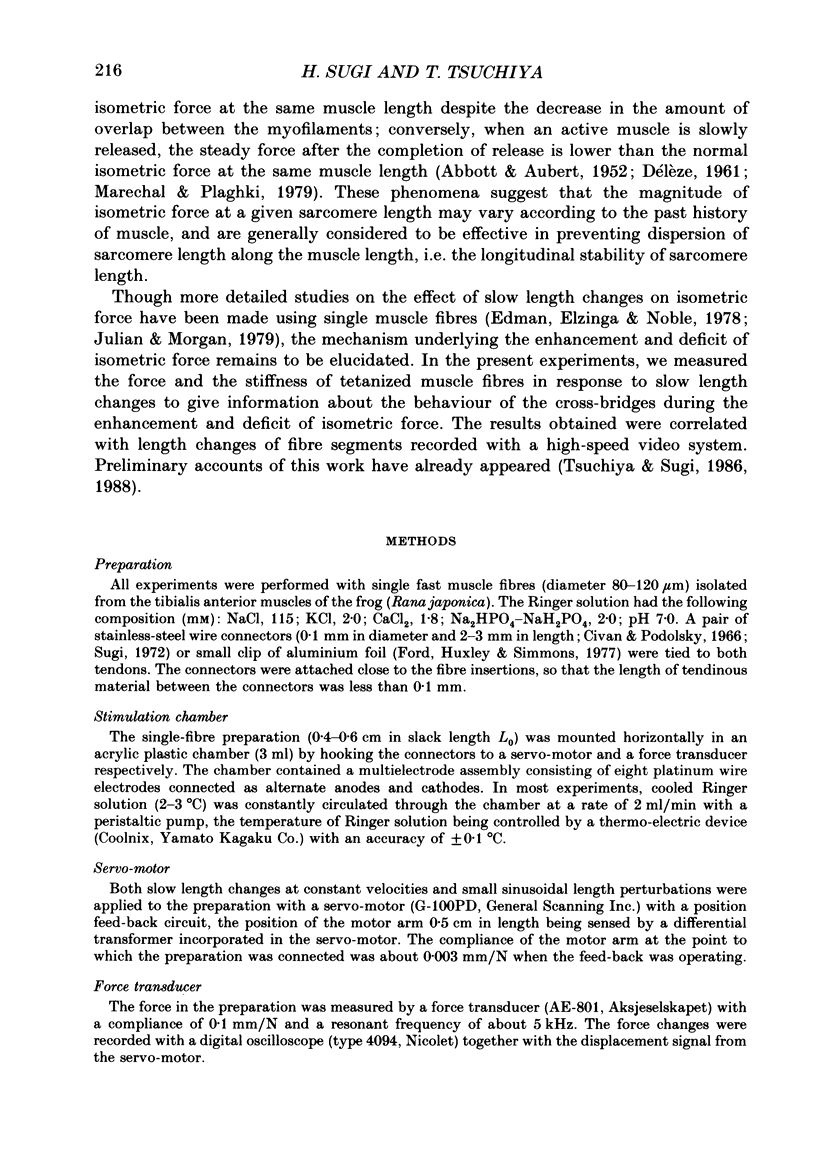

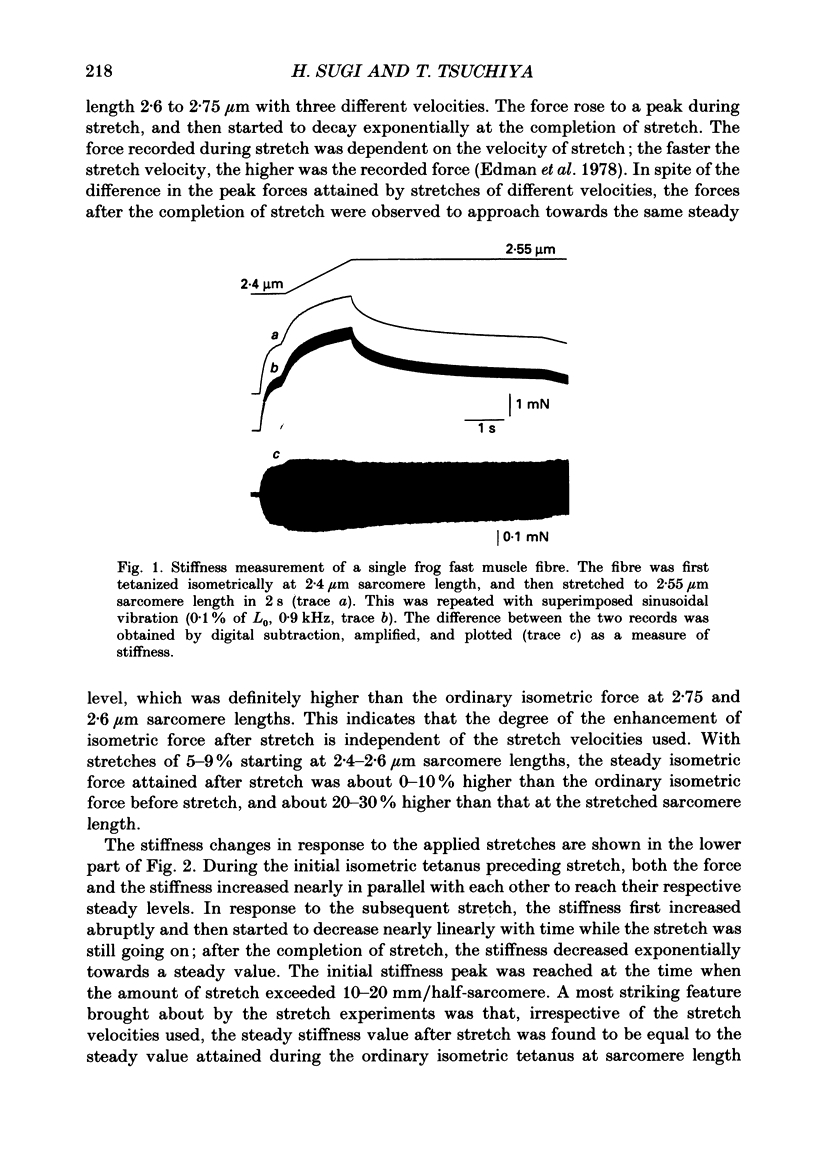

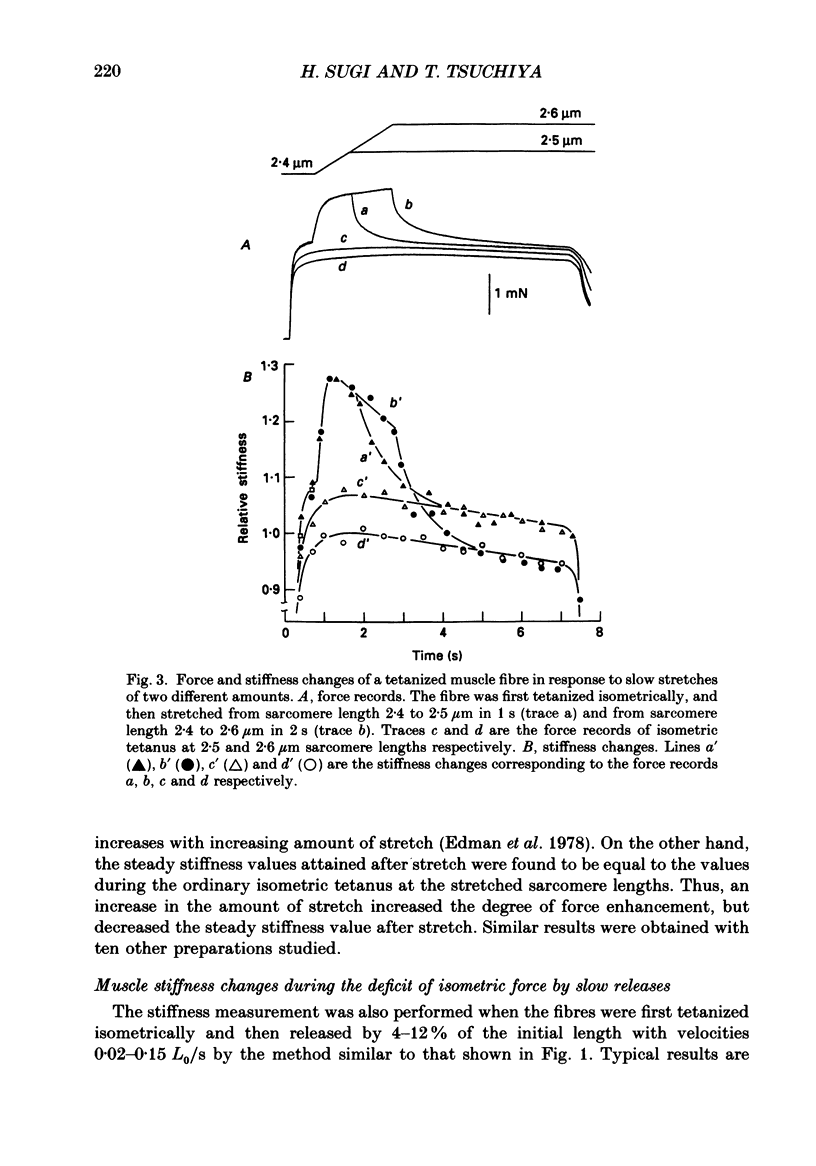
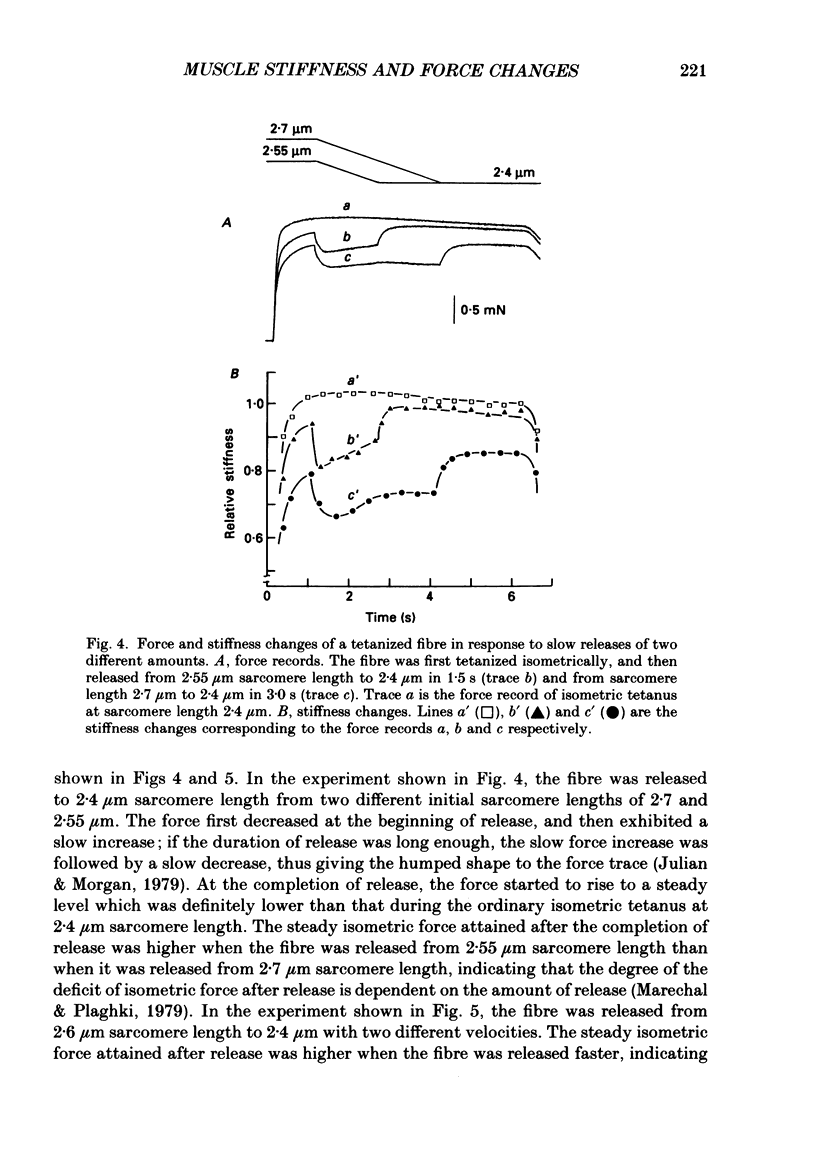
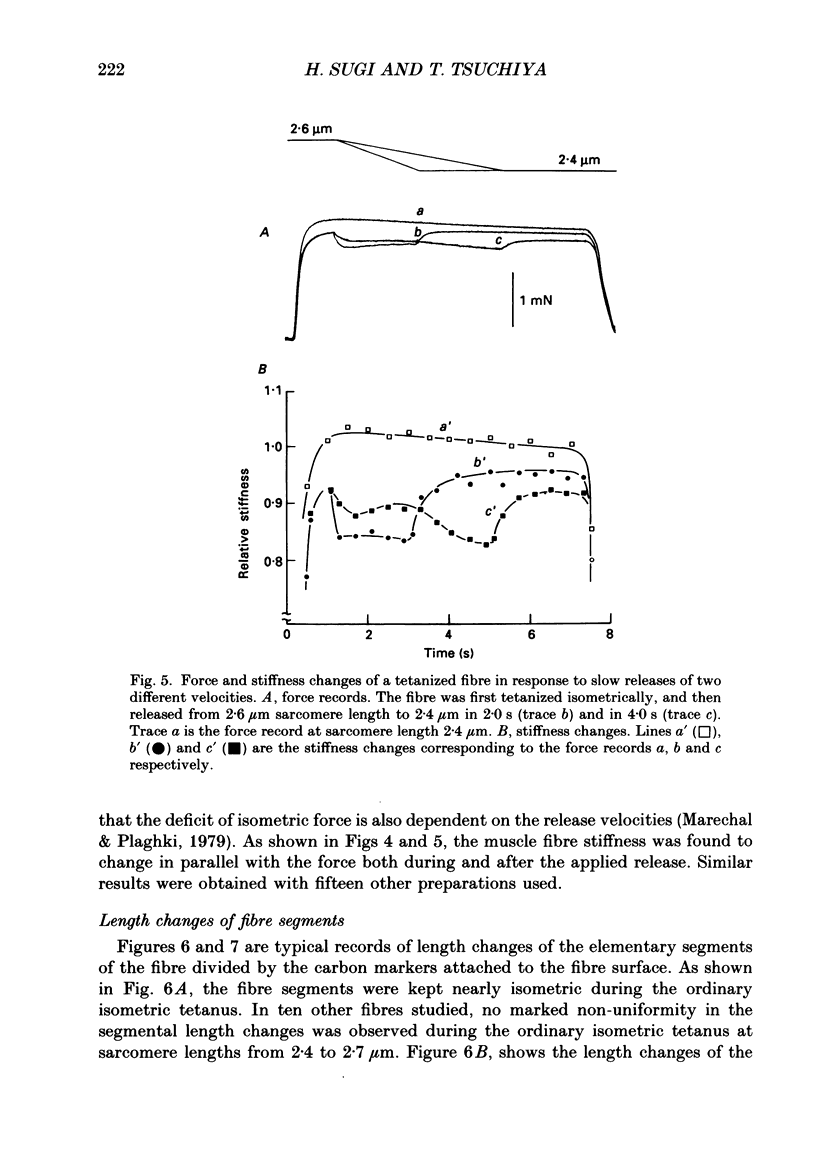
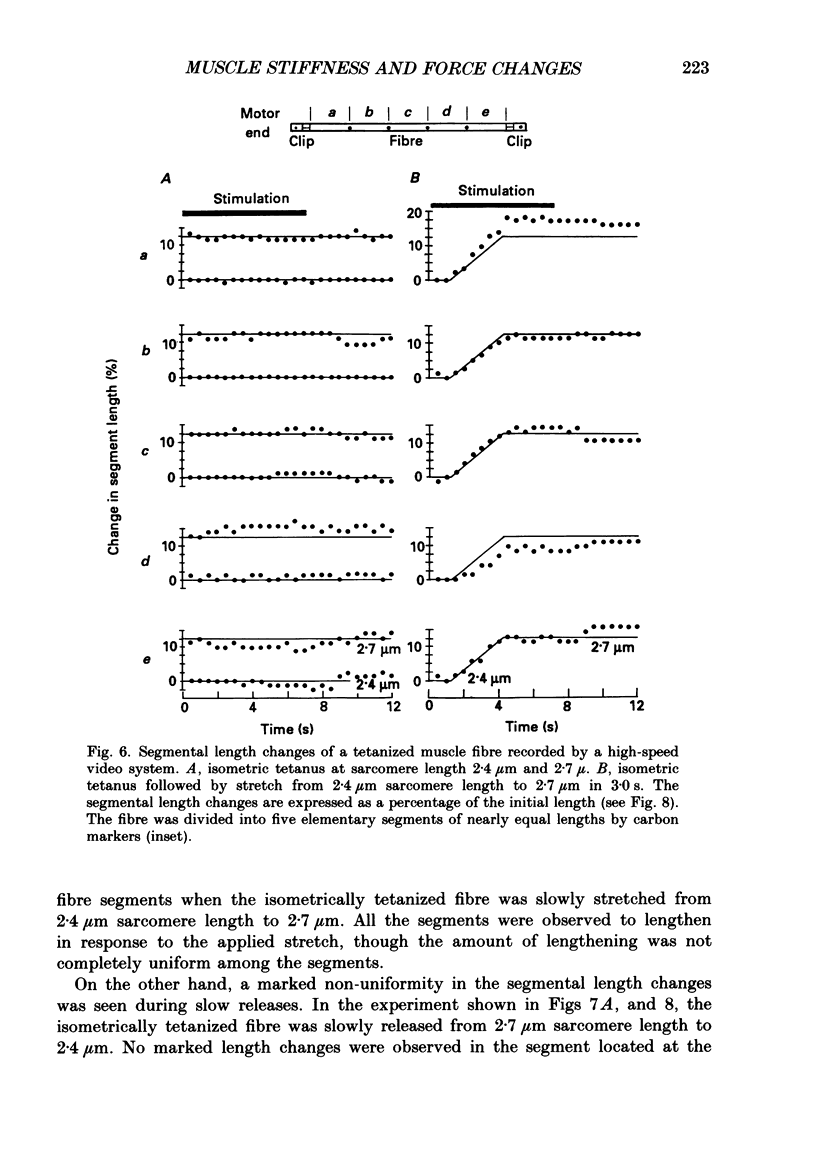
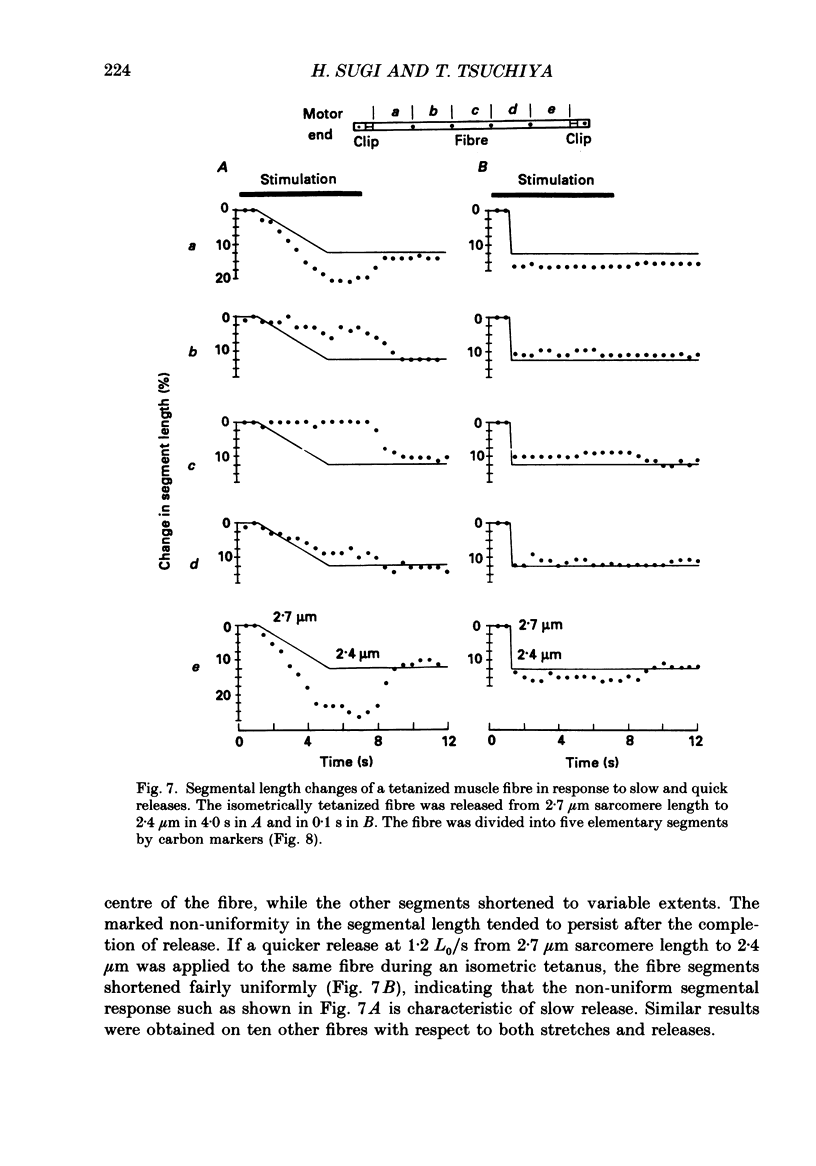

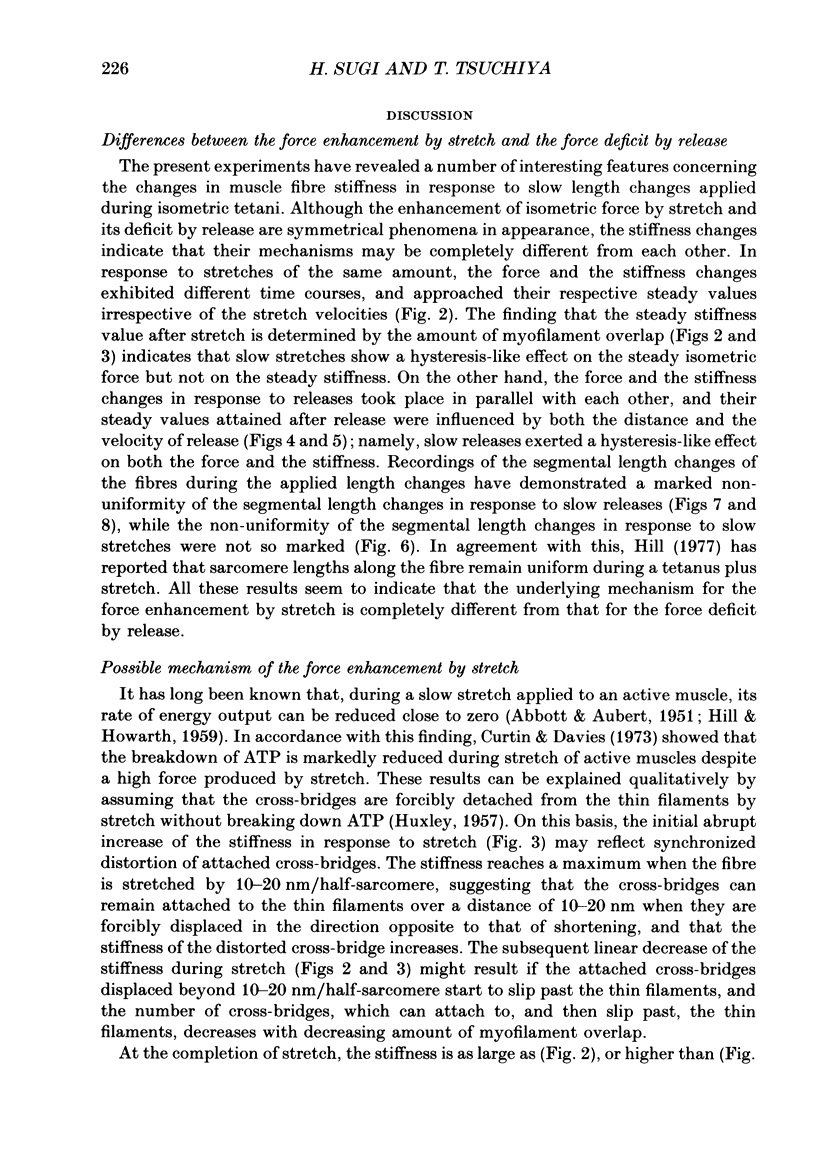

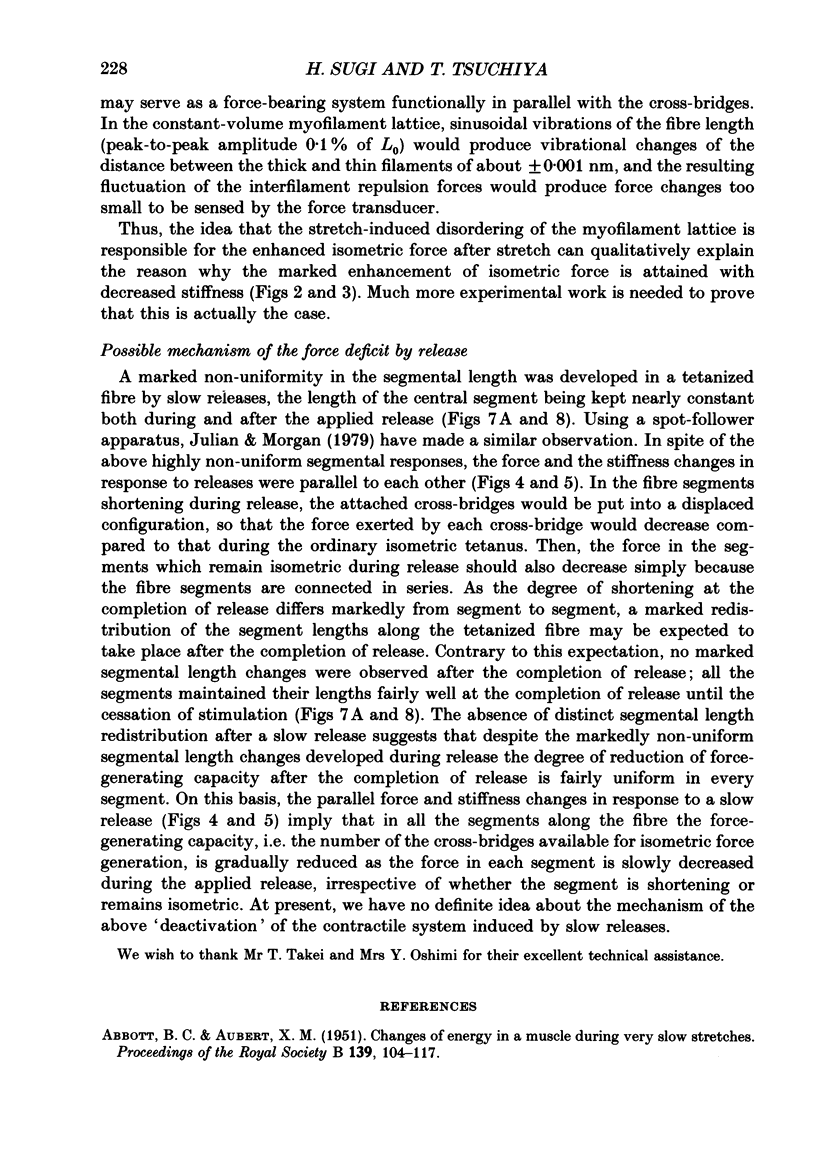
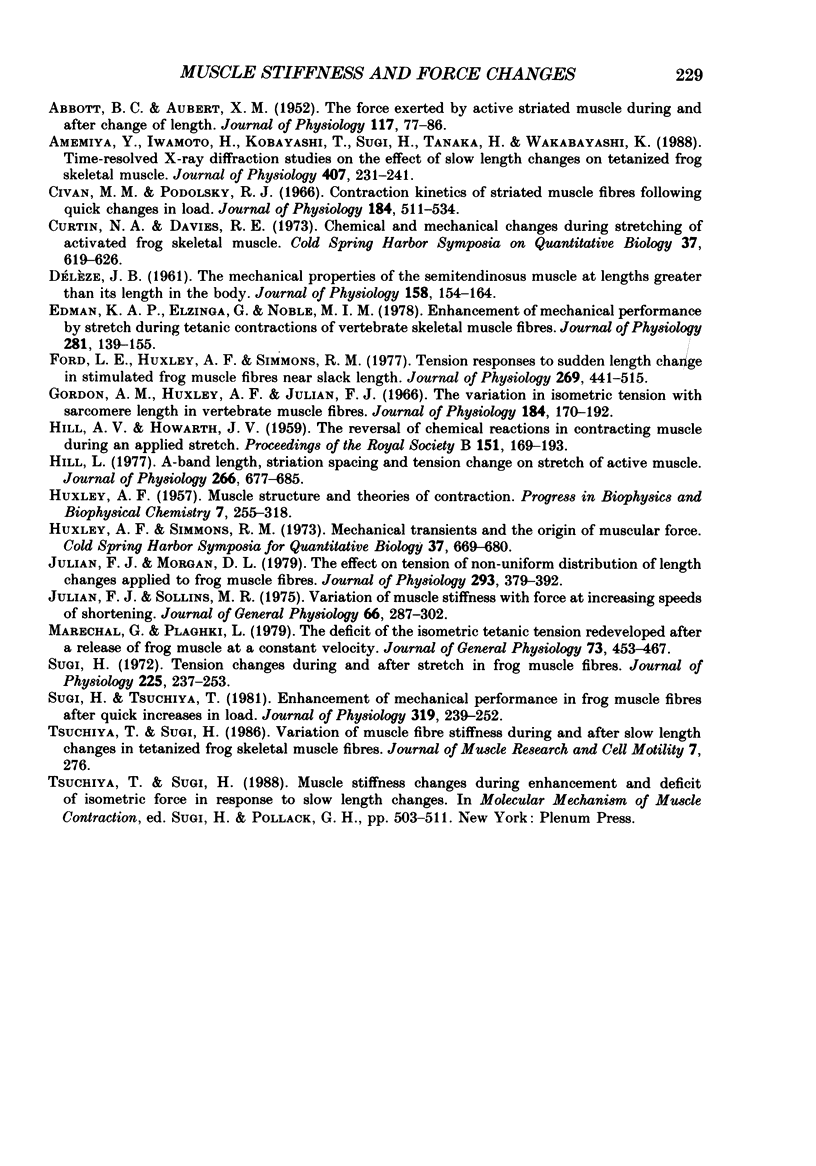
Images in this article
Selected References
These references are in PubMed. This may not be the complete list of references from this article.
- ABBOTT B. C., AUBERT X. M. Changes of energy in a muscle during very slow stretches. Proc R Soc Lond B Biol Sci. 1951 Dec 31;139(894):104–117. doi: 10.1098/rspb.1951.0049. [DOI] [PubMed] [Google Scholar]
- ABBOTT B. C., AUBERT X. M. The force exerted by active striated muscle during and after change of length. J Physiol. 1952 May;117(1):77–86. [PMC free article] [PubMed] [Google Scholar]
- Amemiya Y., Iwamoto H., Kobayashi T., Sugi H., Tanaka H., Wakabayashi K. Time-resolved X-ray diffraction studies on the effect of slow length changes on tetanized frog skeletal muscle. J Physiol. 1988 Dec;407:231–241. doi: 10.1113/jphysiol.1988.sp017412. [DOI] [PMC free article] [PubMed] [Google Scholar]
- Civan M. M., Podolsky R. J. Contraction kinetics of striated muscle fibres following quick changes in load. J Physiol. 1966 Jun;184(3):511–534. doi: 10.1113/jphysiol.1966.sp007929. [DOI] [PMC free article] [PubMed] [Google Scholar]
- Edman K. A., Elzinga G., Noble M. I. Enhancement of mechanical performance by stretch during tetanic contractions of vertebrate skeletal muscle fibres. J Physiol. 1978 Aug;281:139–155. doi: 10.1113/jphysiol.1978.sp012413. [DOI] [PMC free article] [PubMed] [Google Scholar]
- Ford L. E., Huxley A. F., Simmons R. M. Tension responses to sudden length change in stimulated frog muscle fibres near slack length. J Physiol. 1977 Jul;269(2):441–515. doi: 10.1113/jphysiol.1977.sp011911. [DOI] [PMC free article] [PubMed] [Google Scholar]
- Gordon A. M., Huxley A. F., Julian F. J. The variation in isometric tension with sarcomere length in vertebrate muscle fibres. J Physiol. 1966 May;184(1):170–192. doi: 10.1113/jphysiol.1966.sp007909. [DOI] [PMC free article] [PubMed] [Google Scholar]
- HUXLEY A. F. Muscle structure and theories of contraction. Prog Biophys Biophys Chem. 1957;7:255–318. [PubMed] [Google Scholar]
- Hill L. A-band length, striation spacing and tension change on stretch of active muscle. J Physiol. 1977 Apr;266(3):677–685. doi: 10.1113/jphysiol.1977.sp011787. [DOI] [PMC free article] [PubMed] [Google Scholar]
- Julian F. J., Morgan D. L. The effect on tension of non-uniform distribution of length changes applied to frog muscle fibres. J Physiol. 1979 Aug;293:379–392. doi: 10.1113/jphysiol.1979.sp012895. [DOI] [PMC free article] [PubMed] [Google Scholar]
- Julian F. J., Sollins M. R. Variation of muscle stiffness with force at increasing speeds of shortening. J Gen Physiol. 1975 Sep;66(3):287–302. doi: 10.1085/jgp.66.3.287. [DOI] [PMC free article] [PubMed] [Google Scholar]
- Maréchal G., Plaghki L. The deficit of the isometric tetanic tension redeveloped after a release of frog muscle at a constant velocity. J Gen Physiol. 1979 Apr;73(4):453–467. doi: 10.1085/jgp.73.4.453. [DOI] [PMC free article] [PubMed] [Google Scholar]
- Sugi H. Tension changes during and after stretch in frog muscle fibres. J Physiol. 1972 Aug;225(1):237–253. doi: 10.1113/jphysiol.1972.sp009935. [DOI] [PMC free article] [PubMed] [Google Scholar]
- Sugi H., Tsuchiya T. Enhancement of mechanical performance in frog muscle fibres after quick increases in load. J Physiol. 1981;319:239–252. doi: 10.1113/jphysiol.1981.sp013904. [DOI] [PMC free article] [PubMed] [Google Scholar]
- Tsuchiya T., Sugi H. Muscle stiffness changes during enhancement and deficit of isometric force in response to slow length changes. Adv Exp Med Biol. 1988;226:503–511. [PubMed] [Google Scholar]



